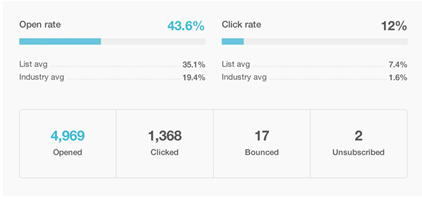The key to developing a profitable company is a growing customer base interested in purchasing your goods or services. In order to build this demand, it is critical to create a process for scouting and developing new clientele. Building your customer base will take time and effort but the important part is to focus on finding out who your target audience is, where to find them, and how to captivate them.
Defining your target audience should be top-of-mind when expanding your customer base. You want to qualify potential customers and not waste your time or money pursuing unqualified leads and contacts. Analyze your company and product and ask yourself the following questions:
- Who would be interested in buying my products?
- How and where will I sell my products/service?
- How did my competitors get started?
- Who has already bought my products?
After you have defined your customer and their purchase cycle, start networking! Below are a few ways to actively seek your target audience and find qualified purchasers.
1) Events: A big part of growing your customer base is networking. People use the term “networking” all the time, but essentially networking is any way in which you cultivate productive relationships for your business. Attending events and conventions that are relevant to your industry is a perfect place to immerse yourself in the right crowd of potential customers. Take time to socialize with other business owners, exchange business cards, and gather information. Ask pointed questions to help understand your customer and make sure to LISTEN to what they have to say. Often times their pain points differ drastically from what you initially perceived.
To stand out and really be ahead of the game, give a talk or presentation about your business. Public speaking builds credibility with your audience and prospective clients. It puts a face on your company: a person that your customers can talk to, relate to, and ask questions.
Relevant: How Much to Spend Online Marketing
2) Use Social Media: Almost everyone in this day and age uses one of the following social media outlets: Facebook, Twitter, LinkedIn, Instagram or Pinterest. Use this to your advantage. Create a brand profile and use social media to stay connected to your customers. Entice them to add and follow your company by providing special deals and updates. Make your brand known and gain visibility. Keep in mind when your customers follow, like, and share your content, they share it with the rest of their network. Incorporate an interactive aspect to your posts by including a poll or shareable picture. Remember, keep it simple and keep it interesting. You don’t want to spam your customers with useless content.
3) Create Email Campaigns: Use email service providers like Constant Contact or MailChimp to send and create emails for your customers. Take advantage of memorable dates, such as holidays, to plan for campaigns that are attractive to your customers and easy to remember. Find out what kind of emails resonate with your particular recipients by interpreting the email analytics. Develop an email marketing strategy to retain your customers and keep them coming back!
Below is a snapshot from MailChimp to show you how easy it can be to decipher how well your email campaigns are doing. See how many people open your email and click your provided links.
Sometimes finding new customers is as easy as pleasing your current ones. Have a good solid product; listen to your clients’ complaints and address them. Reward them for being your customer; show them you care by listening and working out their problems. A company that is customer oriented will retain and develop a much larger customer base. Once you know your current customers are satisfied with the quality of product or service you sell, they won’t hesitate to refer you to their friends and family looking for a similar product or service.

